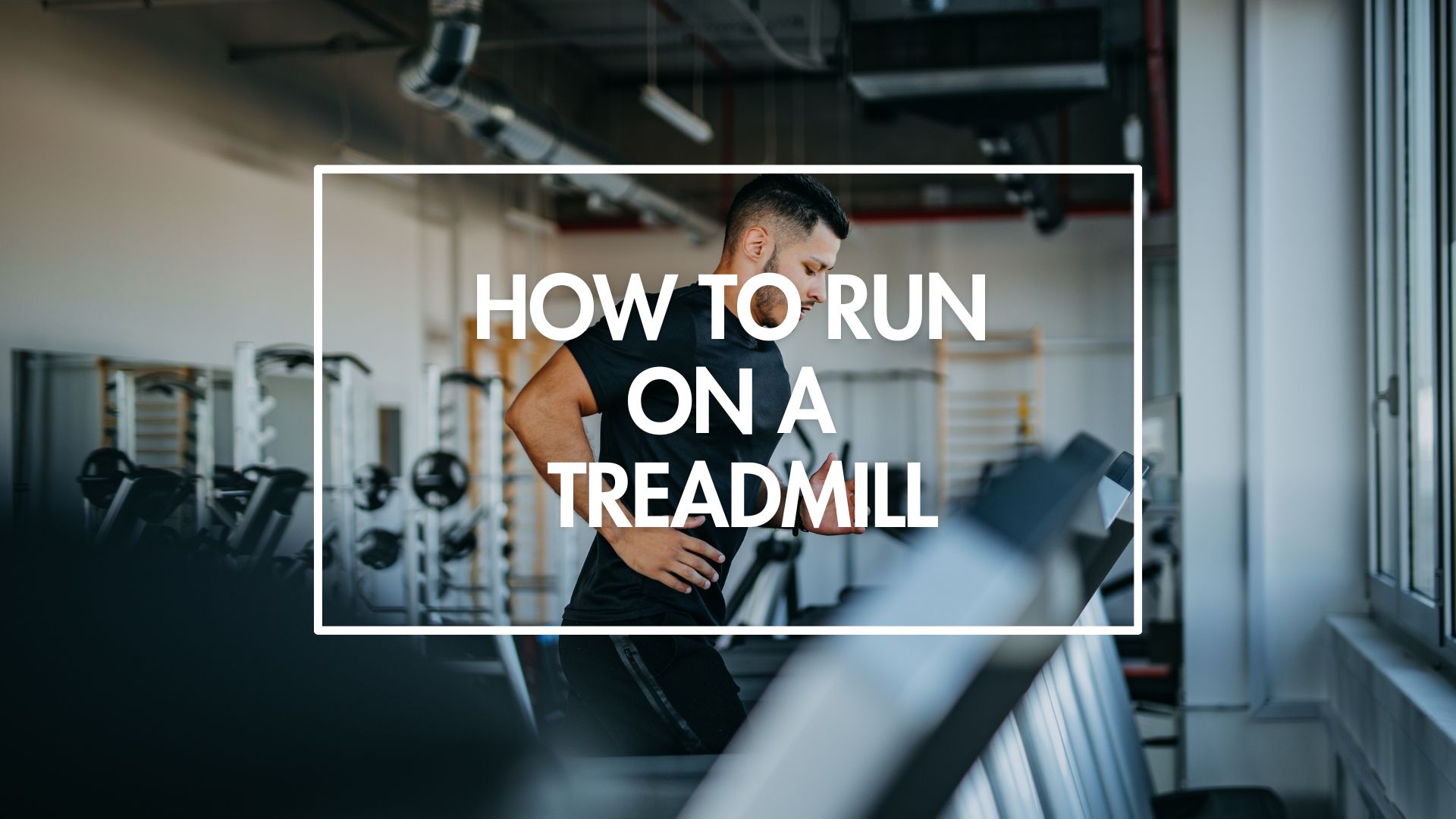Running on a treadmill can be an excellent way to improve your cardiovascular health, build endurance, and even escape outdoor elements that may impede your running schedule. However, it’s important to understand the correct techniques and settings to enjoy the treadmill benefits. Let’s dive into how you can master the art of treadmill running.
Check Treadmill Settings
Before you step onto the treadmill and start your jog or sprint, it is necessary to comprehend the various settings available. The typical treadmill offers many options, from speed adjustments to incline variations, each of which plays a significant role in your workout. You must know how to use a treadmill before you start working out.
The Speed Function
Speed is the most basic and crucial setting on your treadmill. It allows you to set how fast the belt moves and can typically be adjusted by 0.1 or 0.5 mph increments. Beginning at a slow pace and then gradually increasing the speed as your comfort level improves. Remember, the goal is to challenge yourself without risking injury or excess fatigue.
Programmed Workouts
Many treadmills come with pre-set or customizable workout programs. These can offer structured sessions that vary in speed and incline, often designed by fitness professionals to target different goals, such as fat loss, endurance, or interval training. Exploring these can add diversity to your routine and prevent boredom.
Incline Adjustment
Incline settings mimic uphill running and can be a game-changer for your fitness regimen. By elevating the front of the treadmill, you can add intensity to your workout without necessarily increasing speed. Running uphill is an excellent way to build leg strength and endurance.
Warm Up
Diving straight into a high-intensity workout without adequately preparing your body is a recipe for disaster. A proper warm-up raises your body temperature and prepares your muscles and cardiovascular system for the upcoming exertion.
Warming up helps to gradually increase your heart rate and circulation, which loosens the joints and increases blood flow to the muscles. A good rule of thumb is to warm up for at least 5 to 10 minutes before increasing intensity.
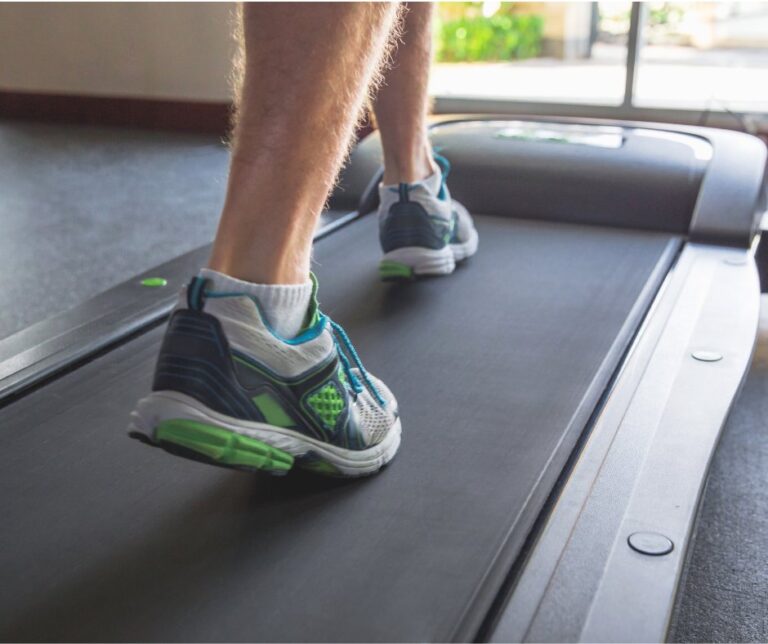
Dynamic Stretching
Including dynamic stretches in your warm-up can also be beneficial. Unlike static stretching, which involves holding a stretch for a period, dynamic stretches are controlled movements that prepare your muscles for the range of motion they’ll experience during running.
Starting Slow
Begin your warm-up at a slow walk or light jog, gradually building up to the speed at which you intend to run during the main segment of your workout. A warm-up is a signal to your body that it’s time to move and can make the transition to higher intensities.
Slight Incline
Setting your treadmill to a slight incline can simulate the natural variation in terrain that occurs when running outdoors. We will guide you through the phases of inclined running on a treadmill.
Running at an incline increases leg muscle activation, improves stamina, and lose weight by burning more calories than running on a flat surface. It also changes the biomechanics of your run, emphasizing different muscle groups, particularly your glutes and hamstrings.
Finding the Right Incline Angle
Setting the treadmill to a 1% to 2% incline is generally recommended to mimic outdoor running conditions. However, it’s essential to listen to your body and adjust accordingly. If you’re new to incline running, start with a lower setting and gradually work your way up as your strength and endurance improve.
Balancing Incline with Speed
When introducing incline to your run, you may find it necessary to adjust your speed to maintain a manageable heart rate and effort level. While the goal is to challenge yourself, maintaining control and proper form is paramount, so be willing to slow down if needed.
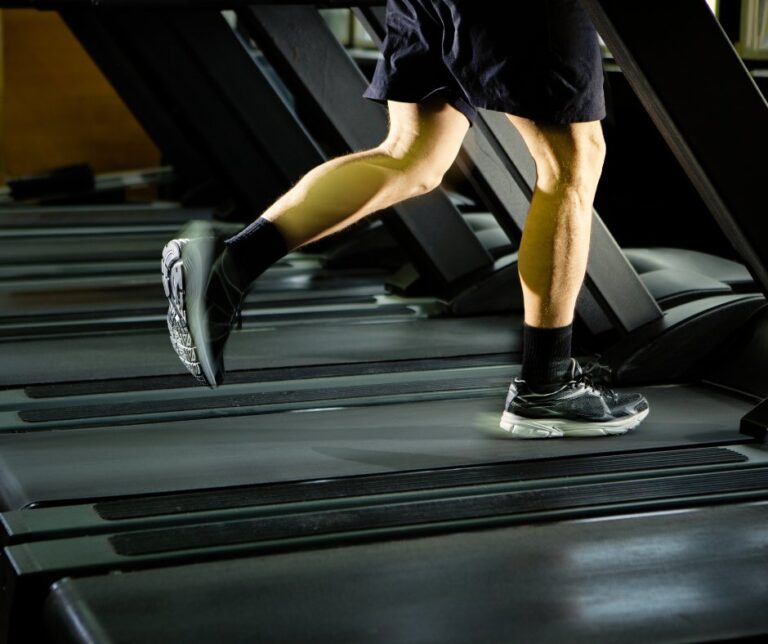
Stay Upright While Running
Maintaining proper posture is required when running on a treadmill. Poor posture can lead to inefficiencies in your running form and may increase the risk of injury over time.
Keeping your body upright with a slight forward lean from the ankles is ideal. This position aligns your body to utilize gravity to your advantage, assists with proper breathing, and engages your core muscles.
Head, Eye and Foot Position
Your head should be forward, focusing on a point in the distance to keep your neck in line with your spine. Avoid looking down at your feet, which can lead to hunching and strain your neck and back.
Running with good posture improves lung capacity, reduces back strain, and can improve overall running efficiency. It also helps prevent common issues such as side stitches and lower back pain.
The alignment of your feet while running plays an integral role in your form and can influence the effectiveness of your workout.
Aiming to keep your toes pointed straight ahead as they strike the treadmill belt ensures that your feet, knees, and hips are aligned properly, reduces the risk of injury and promotes a more efficient running form.
Properly Use Arm Swing
Your arms play a crucial role in balancing your body and contributing to your running rhythm. Therefore, it is wise to use an effective arm swing while running on a treadmill.
A proper arm swing can help to maintain balance, provide momentum, and ensure that your body is working as a cohesive unit. Your arms should swing in a natural motion, opposite to your leg movement, and be bent at about a 90-degree angle.
Avoiding Excessive Movement
Over-swinging or carrying your arms too high can waste energy and throw off your balance. Keep your movements controlled and your hands relaxed, like you were lightly holding a pair of eggs.
Coordination with Leg Stride
The rhythm of your arm swing should match the cadence of your legs. This coordination helps to propel you forward and maintain a consistent pace. If you find your arms and legs out of sync, slow down your pace until you can regain a harmonious movement pattern.
Forget Handrails
Leaning on the handrails can reduce the intensity of your workout by supporting some of your body weight, which decreases the number of calories burned. It can also lead to poor running and unbalanced weight distribution, potentially causing muscle imbalance. While the handrails on a treadmill may seem like a convenient support feature, relying on them can negatively impact your workout.
Running without holding onto the handrails challenges your balance and effectively engages your core muscles. As you build confidence and endurance, running hands-free will become more natural and comfortable.
Treadmill Running Workouts
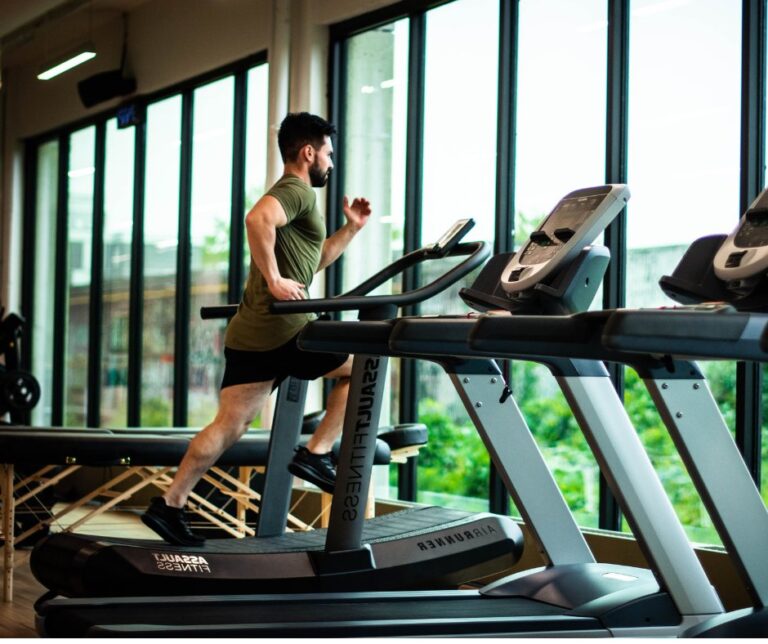
1. Interval Training
Interval training alternates between high-intensity bursts of speed and periods of recovery or lower intensity. Interval treadmill workouts are excellent for improving cardiovascular fitness and can also help to increase calorie burn.
2. Endurance Runs
Longer, steady-paced runs are designed to build endurance and mental stamina. These sessions should be conducted at a challenging yet sustainable pace over a more extended period.
3. Hill Workouts
Adjusting the incline can simulate hill runs on a treadmill. These workouts are fantastic for building leg strength and can add a challenging element to your running routine.
Benefits of Running on a Treadmill
Including treadmill running into your fitness routine can offer a multitude of benefits. Engaging in consistent practice can lead to noticeable improvements in various aspects of your health and well-being.
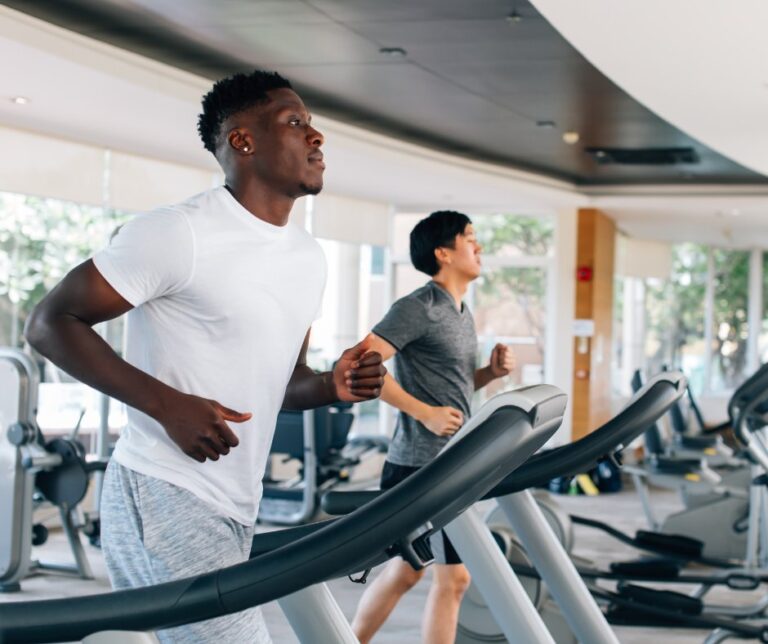
Better Cardiovascular Health
Regular treadmill running can strengthen your heart, improve blood circulation, and reduce the risk of cardiovascular diseases. It’s an efficient way to elevate your heart rate and provide a solid cardiovascular workout.
Weight Management
Running is a high-calorie-burning exercise, and doing it on a treadmill makes it easy to monitor your pace and duration, which can be helpful in achieving and maintaining a healthy weight.
Convenience and Safety
Treadmills offer a safe and convenient environment for running, regardless of weather conditions or time of day and are especially beneficial for those who live in areas with harsh climates or limited outdoor space.
Running on a treadmill can be a dynamic and effective way to enhance your fitness level. By understanding and utilizing the proper techniques and settings, warming up adequately, and combining a variety of workouts, you can make the most of your treadmill running sessions. Remember to maintain proper form, avoid handrail dependency, and stay consistent to reap the primary benefits of regular treadmill use.
Whether you’re training for a race or simply looking to improve your overall health, the treadmill can be a powerful tool in your fitness arsenal. Now, lace up your running shoes and take the first step towards a healthier, more active lifestyle.
